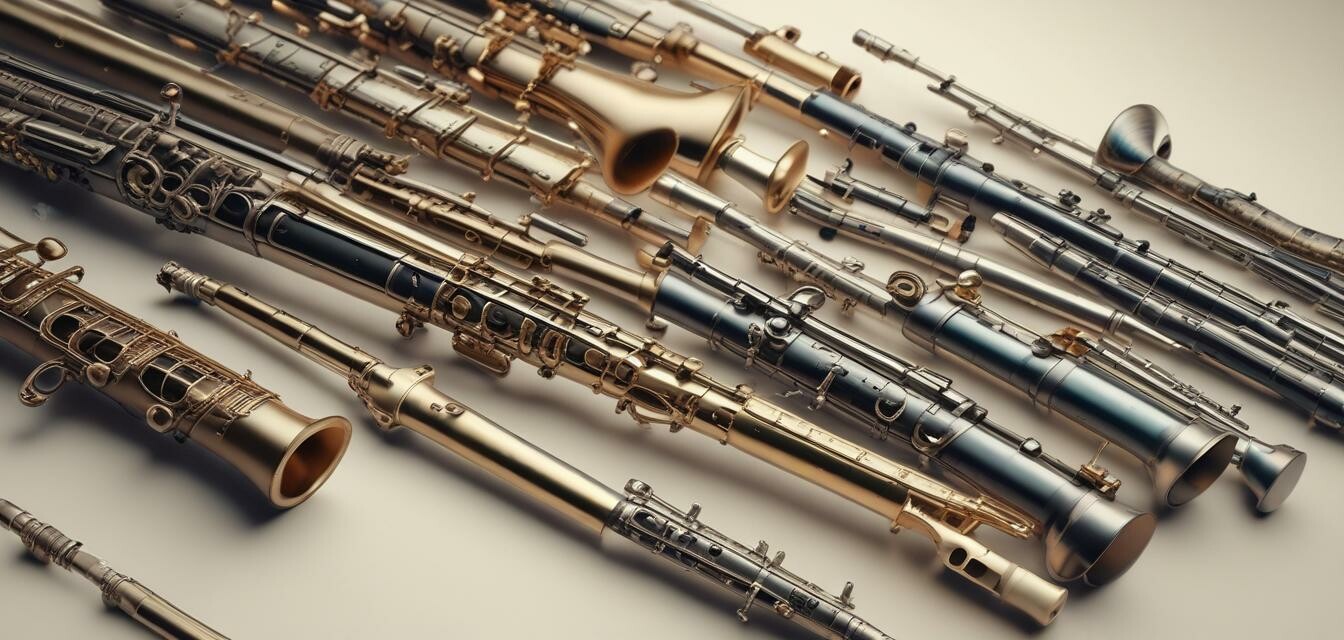
The Latest Trends in Woodwind Instruments for 2024
Key Takeaways
- Innovative materials are enhancing the quality of sound in woodwind instruments.
- Modern designs focus on ergonomics and playability, catering to musicians of all levels.
- Technology integration such as electronic features is becoming more common in woodwind instruments.
- Environmental sustainability is influencing the manufacturing of woodwind instruments.
- Collaboration between brands and musicians is vital in the evolution of woodwind instruments.
The world of woodwind instruments is constantly evolving, and 2024 is no exception. Expect to see a blend of traditional craftsmanship and modern technology taking center stage. In this article, we will dive into the latest trends that are shaping the woodwind instrument market, while also exploring how these changes enhance the musician's experience. Whether you're an amateur musician or a professional, staying updated can significantly improve your choices.
Emerging Materials in Woodwind Instruments
One of the most exciting trends in woodwind instruments for 2024 is the emergence of innovative materials that improve sound quality and durability. Here are some materials that are gaining traction:
| Material | Description | Benefits |
|---|---|---|
| Plastic Resins | Lightweight and durable, often used in student instruments. | Weather-resistant, consistent sound quality. |
| Composite Alloys | Mix of metals and polymers providing unique tonal qualities. | Enhances resonance and durability. |
| Bamboo | A natural alternative offering a warm sound. | Eco-friendly and sustainable, promoting environmental health. |
Advanced Technology Integration
The integration of technology in woodwind instruments is revolutionizing how musicians interact with their instruments. Many brands are introducing smart features such as:
- Digital Tuners: Built-in tuners that make it easier to maintain perfect pitch.
- Sound Analysis Apps: Tools that help musicians track their progress and sound quality.
- Electronic Enhancements: Use of pickups and microphones for digital performances.
These technological advancements not only improve performance but also offer a bridge between traditional woodwind playing and modern digital performances.
Ergonomic Designs and Playability
Another trend for 2024 is the focus on ergonomic designs that enhance playability. Brands are working with musicians to understand how design impacts performance. Key features include:
- Adjustable Key Layouts: Customizable configurations to suit individual playing styles.
- Lightweight Materials: Reducing the overall weight of instruments for easier handling.
- Responsive Key Mechanisms: Providing quicker action and reduced resistance.
Sustainability in Manufacturing
The woodwind instrument industry is making significant strides toward sustainability. Manufacturers are increasingly focused on environmentally friendly practices, such as:
- Use of Recycled Materials: Incorporating recycled plastics and metals in production.
- Sustainable Sourcing: Sourcing woods from responsibly managed forests.
- Low-Impact Processes: Implementing processes that minimize waste and energy consumption.
Musicians are becoming more conscious of the environmental impact of their instruments and are looking for brands that prioritize sustainability.
Collaboration with Musicians
Many brands are recognizing the importance of collaborating with experienced musicians to develop new models and improve existing ones. This trend helps ensure that instruments meet the needs of players across various levels. Collaborations can result in:
- Feedback on Design: Continuous input on what works and what doesn't in real-world scenarios.
- Influencer Partnerships: Influencers and musicians showcase products, driving brand awareness.
- Exclusive Models: Signature series that reflect the preferences of top musicians.
Pros
- Higher quality sound due to better materials.
- Technological advancements enhance user experience.
- Sustainable practices appeal to environmentally conscious consumers.
- Collaborative designs result in better playability.
Cons
- Potentially higher costs for advanced instruments.
- Transitioning to new technologies may require learning.
- Eco-friendly products may have limited availability.
Conclusion
The world of woodwind instruments is embracing change like never before. As we delve into 2024, expect to see cutting-edge materials, technological integration, ergonomic designs, and a commitment to sustainability defining the market. For musicians, these trends not only help in selecting better instruments but also contribute to a more enjoyable playing experience. Remember to stay updated by visiting our blog for more news and trends in the music industry, including categories on woodwind instruments and buying guides.